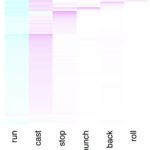Link to Pubmed [PMID] – 25145980
J Vis Exp 2014 Aug;(90):e51704
Robots designed to track chemical leaks in hazardous industrial facilities or explosive traces in landmine fields face the same problem as insects foraging for food or searching for mates: the olfactory search is constrained by the physics of turbulent transport. The concentration landscape of wind borne odors is discontinuous and consists of sporadically located patches. A pre-requisite to olfactory search is that intermittent odor patches are detected. Because of its high speed and sensitivity, the olfactory organ of insects provides a unique opportunity for detection. Insect antennae have been used in the past to detect not only sex pheromones but also chemicals that are relevant to humans, e.g., volatile compounds emanating from cancer cells or toxic and illicit substances. We describe here a protocol for using insect antennae on autonomous robots and present a proof of concept for tracking odor plumes to their source. The global response of olfactory neurons is recorded in situ in the form of electroantennograms (EAGs). Our experimental design, based on a whole insect preparation, allows stable recordings within a working day. In comparison, EAGs on excised antennae have a lifetime of 2 hr. A custom hardware/software interface was developed between the EAG electrodes and a robot. The measurement system resolves individual odor patches up to 10 Hz, which exceeds the time scale of artificial chemical sensors. The efficiency of EAG sensors for olfactory searches is further demonstrated in driving the robot toward a source of pheromone. By using identical olfactory stimuli and sensors as in real animals, our robotic platform provides a direct means for testing biological hypotheses about olfactory coding and search strategies. It may also prove beneficial for detecting other odorants of interests by combining EAGs from different insect species in a bioelectronic nose configuration or using nanostructured gas sensors that mimic insect antennae.

